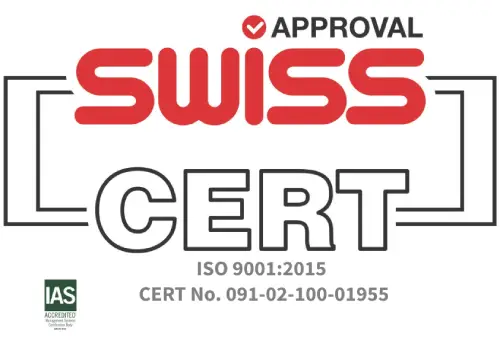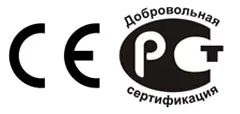2025

Why Polygomma EPDM Fish Pond Liner Is the Smart Choice for Safe, Long-Lasting Ponds
Whether you’re building a serene garden pond, a decorative koi pond, or a functional aquaculture setup, there’s one invisible element that plays a vital role, your pond liner. While it may not be the most glamorous part of your water feature, the pond liner is what makes everything possible.
Among the many options, the EPDM fish pond liner has rapidly become the trusted choice for hobbyists and professionals alike. Why? Because it strikes the perfect balance between flexibility, strength, safety, and ease of use.
In this blog, we’ll explore everything you need to know about EPDM liners, what makes them superior, how they protect your aquatic life, and why they’re perfect for ponds of all shapes and purposes.
What Makes Polygomma EPDM the Ideal Fish Pond Liner?
When it comes to pond construction, the lining material can make or break your project—quite literally. EPDM (Ethylene Propylene Diene Monomer) has become the go-to for those seeking durability and long-term peace of mind.
Superior Resistance to UV, Ozone, and Extreme Temperatures
One of the standout qualities of an EPDM fish pond liner is its exceptional resistance to ultraviolet rays and ozone. Unlike traditional liners that may crack, fade, or become brittle with constant sun exposure, EPDM remains stable. Let’s start with its incredible resistance to environmental stressors:
- Performs reliably in temperature ranges from -40°C to +160°C
- Maintains its structural integrity in both freezing winters and scorching summers
- Withstands long-term exposure to outdoor conditions without degradation
This makes EPDM liners ideal not only for ornamental backyard ponds but also for professional aquaculture or irrigation ponds in challenging climates.
Extreme Flexibility and High Elongation
Designing a pond is part function, part art. You want something that complements your landscape, suits your space, and reflects your aesthetic vision. The beauty of EPDM lies in how well it accommodates creativity. Here’s how EPDM supports versatile pond designs:
- Offers elongation of more than 300%, allowing the liner to stretch without tearing
- Easily conforms to any shape or contour—perfect for custom ponds
- Accommodates subtle ground movements without cracking or pulling apart
This means you’re free to create irregular designs, layered waterfalls, or multi-level basins—without worrying about liner failure. For landscapers and homeowners who want more than just a basic rectangle, EPDM offers design freedom with dependable results.
Quick and Easy Installation
You don’t need to be an engineer or contractor to work with an EPDM liner. One of its biggest advantages is its user-friendly nature. Installation is made easy for both DIYers and professionals:
Hassle-Free Setup
- Installs quickly without the need for heat guns, welders, or heavy equipment
- Lightweight and easy to manoeuvre—even for DIYers
- Ideal for retrofitting or expanding existing ponds
This simplicity also translates into lower labour costs for commercial projects and faster timelines for personal ones. Whether you’re building a pond over a weekend or managing a larger installation, EPDM helps you get the job done efficiently.
Safe for Aquatic Life: Tested and Trusted Worldwide
When your pond is home to goldfish, koi, or even aquaponics plants, safety isn’t optional—it’s essential. One of the strongest selling points of an EPDM fish pond liner is its excellent track record when it comes to aquatic life. Here’s how EPDM supports aquatic safety with certified standards:
- Safe for freshwater fish like Goldfish (Carassius auratus) – tested under ASTM E729-2002
- Can be used in ponds storing food-contact aqueous solutions – tested under FDA 21-CFR-177-2600
- Not harmful to aquatic life when used appropriately, though a local compliance check is recommended
This makes EPDM liners suitable for a range of uses—from backyard fish ponds to commercial aquaponics systems and organic farms. Just ensure compliance with regional regulations to match the end use.
Long-Term Value: Built to Last for Years
While upfront cost is always a consideration, a pond liner’s real value lies in how well it performs over time. EPDM liners may cost slightly more than low-grade PVC or HDPE options, but the long-term returns are significantly higher. Here’s why EPDM is a wise long-term investment:
- Doesn’t crack or shrink over time—no premature repairs
- Resists root penetration and mechanical stress
- Reduces the likelihood of leaks, water loss, or aquatic health issues
In short, you can expect your EPDM fish pond liner to last 20 years or more with proper installation and maintenance. That’s more time enjoying your pond and less time worrying about it.
Real-World Use Cases
Let’s look at where and how these liners are commonly used:
Home Gardens & Decorative Ponds
- Aesthetically shaped ponds with smooth contours
- Integrated waterfalls, stepping stones, and aquatic plants
Research & Aquaculture Facilities
- Controlled aquatic environments that require material safety
- Ponds for breeding or storing fish, shrimp, or aquatic plants
Organic Farming & Irrigation
- Water storage for farm use
- Safe water containment for food-grade crops and livestock
EPDM’s adaptability makes it suitable for a wide range of applications—each with its unique requirements but similar expectations for performance and reliability.
Takeaway Summary: Why EPDM Is the Clear Choice
If you’re planning to build a pond—be it for beauty, business, or biodiversity—choosing the right liner is non-negotiable. Here’s what you gain with an EPDM fish pond liner:
- Unmatched flexibility that adapts to any pond shape or earth movement
- Extreme resistance to UV rays, ozone, and harsh temperatures
- Quick installation with no complicated tools or techniques
- Proven aquatic safety, backed by FDA and ASTM standards
- Long-term durability, saving you from frequent repairs and leaks
EPDM liners offer a perfect combination of strength, simplicity, and safety, making them a top-tier option across industries and climates.

